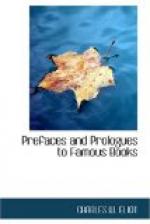The papers which we intend to present, though they are composed by several authors, will, it is hoped, never be contradictory in the main points, even though the methods of thought may not be the same in all. No two persons regard the world in exactly the same way, and different characters will often apply in different ways a principle which they all acknowledge. Indeed, a person is not always consistent with himself in his views and judgments: early convictions must give way to later ones. The individual opinions that a man holds and expresses may stand all tests or not; the main thing is that he continue on his way, true to himself and to others!
Much as the authors wish and hope to be in harmony with one another and with a large part of the public, they must not shut their eyes to the fact that from various quarters many a discord will ring out. They must expect this all the more since they differ from prevailing opinions in more than one point. Though far from wishing to dominate or change the way of thinking of a third person, still they will firmly express their own opinion, and, as circumstances dictate, will avoid or take tip a quarrel. On the whole, however, they will adhere to one creed, and especially will they repeat again and again those conditions which seem to them indispensable in the training of an artist. Whoever takes an interest in this matter, must be ready to take sides; otherwise he does not deserve to be effective anywhere.
If, therefore, we promise to present reflections and observations concerning Nature, we must at the same time indicate that these remarks will chiefly have reference, first, to plastic art; then, to art in general; finally, to the general training of the artist.
The highest demand that is made on an artist is this: that he be true to Nature, study her, imitate her, and produce something that resembles her phenomena. How great, how enormous, this demand is, is not always kept in mind; and the true artist himself learns it by experience only, in the course of his progressive development. Nature is separated from Art by an enormous chasm, which genius itself is unable to bridge without external assistance.
All that we perceive around us is merely raw material; if it happens rarely enough that an artist, through instinct and taste, through practice and experiment, reaches the point of attaining the beautiful exterior of things, of selecting the best from the good before him, and of producing at least an agreeable appearance, it is still more rare, particularly in modern times, for an artist to penetrate into the depths of things as well as into the depths of his own soul, in order to produce in his works not only something light and superficially effective, but, as a rival of Nature, to produce something spiritually organic, and to give his work of art a content and a form through which it appears both natural and beyond Nature.




